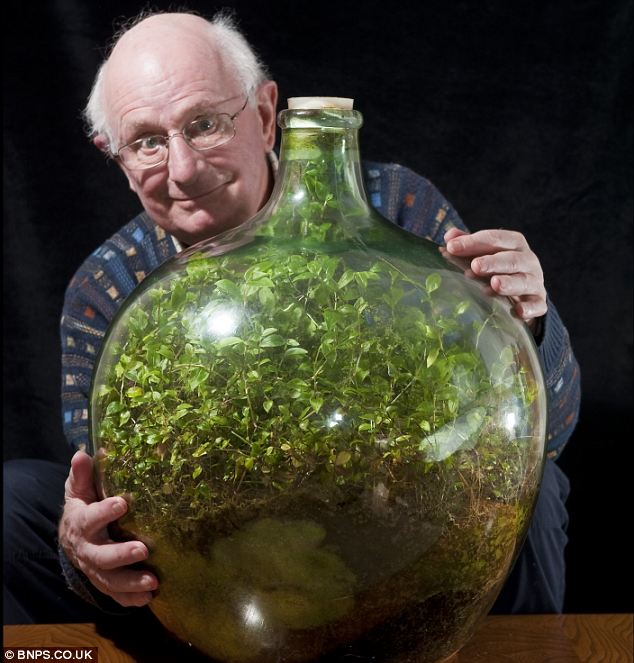The Great Oxygenation Event
Description: The Great Oxygenation Event occurred when cyanobacteria living in the oceans started producing oxygen through photosynthesis. As oxygen built up in the atmosphere anaerobic bacteria were killed leading to the Earth's first mass extinction. The change in diversity and the arrival of appreciable atmospheric oxygen (as evidenced by the red bands in the rocks) can be analyzed to see what happens when a resource that was scarce becomes very abundant.
Web Resource: Great Oxygenation Event - Wikipedia
If We Are What We Eat, Americans Are Corn and Soy
Description: This CNN story and journal article show how big a role corn plays in the diet of typical Americans. Scientists can do isotope analysis of the carbon to determine the source of carbon. Corn production is heavily subsidized in the US and relies on large amounts of fertilizers and water.
Web Resources: If we are what we eat, Americans are corn and soy - CNN, Carbon and nitrogen stable isotopes in fast food: Signatures of corn and confinement - PNAS
Public Domain, Link
Reconstructing Ancient Diets with Isotopes
Description: Scientists are able to reconstruct the diet of ancient humans by analyzing the isotopes found in their bones and hair. For example by examining the 12C/13C isotope ratio they can determine if the diet was mainly wheat (a C3 plant) or corn (a C4 plant). They can also place the diet in different trophic levels based on the isotopes of carbon as well as nitrogen and oxygen. This phenomenon could start with the following question: Was the paleo diet truly the paleo diet?
Web Resource: Reconstructing Ancient Diets with Isotopes - Wikipedia
Vegetable Oil as Fuel
Description: Vegetable oil can be used as fuel in both diesel cars and heating oil burners. Reclaimed vegetable oil that is used in food service industries could be used to reduce the amount of fossil fuels that are being used by humans. This phenomenon could be used in an energy unit related to either the physical or life sciences.
Web Resources: Vegetable Oil Fuel - Wikipedia, Students Power Bus with Vegetable Oil - NBC
Biosphere 2
Description: Biosphere 2 was created in the 1990's to model all the elements of Biosphere 1 (The Earth). Plants in the biosphere produced oxygen and food for the inhabitants. The carbon dioxide released during respiration was taken in by the plants cycling the matter with energy from the Sun. In this experiment oxygen levels steadily fell to dangerous levels and oxygen eventually had to be added to the biosphere. This large-scale phenomenon continues to be owned and run by the University of Arizona. The mystery of missing oxygen could be used as a phenomenon in a unit on matter cycling and energy flow. Students can even create biospheres of their own and monitor life over time.
Warning: This video contains strong language (11:06) and is not appropriate for younger viewers. Please use teacher discretion when showing segments of this video directly to children.
Web Resource: Biosphere 2 - Wikipedia
Algae Fuel and Food
Description: Algae food and fuel hope to reduce human dependence on fossil fuels and avert food shortages around the world. Algae fuel works in the same way as fossil fuels but the carbon dioxide released during combustion is carbon taken from the atmosphere in algae photosynthesis. Algae can also be used to create animal feed which currently uses large amounts of soil and water resources. This phenomenon can be use in an energy unit or life science unit related to mass and energy.
Web Resource: Algae Fuel - Wikipedia
Attack Of The Killer Fungi
Description: The cordyceps fungi has a fascinating life cycle. Spores from the fungi are ingested by an insect (like an ant). The fungi takes over the insect causing it to climb to a high branch and hold tight with its mandibles. A fruiting body then emerges from the head of the insect and spreads more spores that infect more insects. Different species of cordyceps infect different species of insects. This phenomenon can be used to introduce the diverse and unique life cycles found in organisms.
Web Resource: Cordyceps Fungi - Wikipedia
12 Years in a Sealed Ecosphere
Description: The Ecosphere in this video has been sealed in a glass container for 12 years. No air or food was able to enter or leave the Ecosphere during this entire time yet the shrimp are all still alive. This phenomenon can be used in the elementary science classroom to introduce plant and animal needs. It can be used in middle and high school to address matter cycling and energy flow.
Web Resources: Ecosphere (aquarium) on Wikipedia, Ecospheres
Ecosphere Sealed for Over 50 Years
Description: According to this Daily Mail article David Latimer has had a sealed ecosphere for over fifty years that he has only watered once.
Web Resource: Daily Mail article









